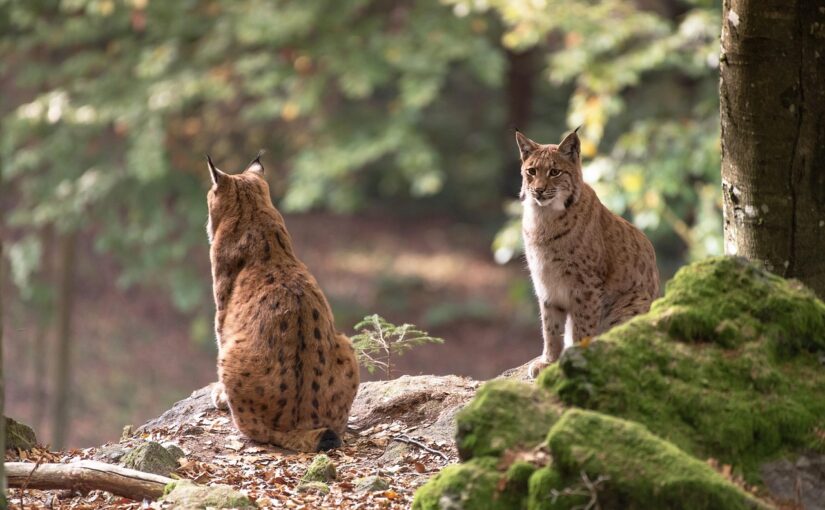The North American bobcat, Lynx rufus, is the most adaptable and widespread of all lynx species. Sometimes called the American wildcat, this stealthy predator is smaller than its Eurasian cousins but radiates a quiet strength and cleverness. From the pine forests of Maine to the deserts of Texas and the swamps of Florida, the bobcat makes its home wherever there is cover, a bit of water, and prey to pursue.
At first glance, the bobcat has a look all its own. It stands between 30 and 60 centimeters at the shoulder, with adult lengths ranging from just under half a meter to over a meter, though the average is about 83 centimeters. Its namesake, the “bobbed” tail, is 9 to 20 centimeters long, tipped and streaked in black. With a body weight that ranges from six to eighteen kilograms, this feline is lightly built in the southern parts of its range, but grows larger and bulkier further north and in more open landscapes.
A bobcat’s fur is a beautiful tapestry of reddish brown marked with black spots and streaks, especially on the back, flanks, and face. The belly and throat are bright white, offering a sharp contrast to the earthy hues of the upper body. Its head, dotted with black speckling and crowned with petite ears, maintains a wary alertness. While most lynx have striking black ear tufts, the bobcat’s are much shorter, sometimes barely noticeable.
One of the most remarkable things about the bobcat is its adaptability. It lives across the United States and Mexico in a dazzling variety of habitats, showing an extraordinary range even by wild cat standards. While it prefers forests, be they broadleaf, pine, or mixed, it is equally at home in mountains, swamps, deserts, and even near farmland or rocky outcrops. Its spotted coat provides perfect camouflage, allowing it to move unseen through reeds on the edge of a rice field or boulders along a mountain slope.
Despite its shy nature, the bobcat is unafraid of human proximity. It has become adept at navigating landscapes altered by agriculture and settlement, a talent that has contributed to its success where other wild cats decline. Often silent and solitary, it is seldom seen, but its hoarse cries sometimes echo across the night, sharp reminders that wildness persists even near civilization.
As a hunter, the bobcat is both patient and resourceful. It prefers to stalk by night, sensing with keen vision and hearing but also hunting opportunistically by day if the mood or need arises. Its diet is broad: rabbits, rodents, birds, reptiles, and insects are mainstays, but it will not hesitate to tackle prey as large as deer on occasion. It hunts mostly by sneaking close to an intended victim and making a sudden leap or short burst of speed. Like the leopard, it is the master of the silent ambush, seizing opportunity and blending back into the undergrowth when the hunt is done.
Bobcats are masters of feast and famine. When food is scarce, they can endure long periods without eating. But when prey abounds, they eat heartily, sometimes storing leftovers for leaner times. These cycles of hunger and plenty shape a rhythm that wild bobcats know well.
Their social structure is characterized by solitude except during the breeding season, which typically spans the late winter through early spring. A male may mate with several females in his range. After roughly two months of gestation, litters of one to six kittens are born, usually in April or May, although second litters later in the year are not unheard of. Mothers raise their young mostly alone, but males have occasionally been observed bringing food and joining their families during the time when kittens are learning to hunt. However, the bond is short-lived, and soon the male resumes his solitary wanderings. By the time the kittens reach their first year, they are independent and the family ties have dissolved into the wild.
The bobcat’s evolutionary history links it to Europe. Scientists believe its ancestors crossed over from the old world during the Pleistocene, journeying from the Eurasian lynx across the Bering land bridge into North America, where the bobcat diversified rapidly and took hold. Today, its population remains robust even in the face of hunting and habitat change. Most bobcats live six to eight years in the wild, with a fortunate few reaching up to sixteen years. Remarkably, bobcats in captivity have survived over three decades.
Myth and folklore surround the bobcat. North American Native peoples often paired the bobcat with the coyote as figures of opposition. The lynx was associated with fog, the coyote with wind. The relationship between these two clever animals symbolized the mysterious duality of nature’s forces, each a trickster and teacher in their own right.
To spot a bobcat is to encounter a living echo of the wild heart of a continent. Its pawprints pattern the sand, its call pierces the stillness, and its gaze, wary but unwavering, reminds us of the ancient partnerships between predator, land, and legend. It is the wild cat next door, champion of survival, and silent prowler in the twilight hours. Wherever the land remains untamed, the spirit of the bobcat endures.
Image by Eszter Miller.
If you find joy in these tales of twitching whiskers and gleaming eyes, consider helping keep Whiskerito.com alive and purring. Your donation supports thoughtful research, engaging content, and the warm, wonder-filled community that makes this space what it is.
